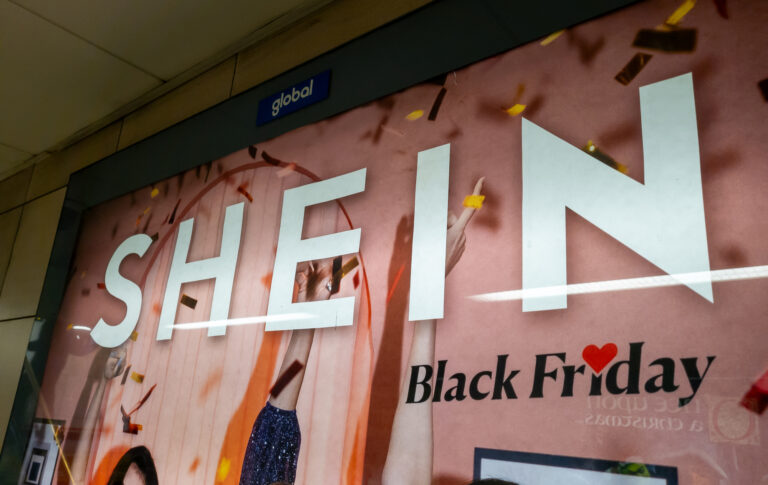Now that the crazy shopping spree of the singles’ day shopping festival is over and 1.07 billion parcels have traveled all over China, let us step back a bit to take an objective look at this event. After all, it’s not the single period of the year when retail sales increase.
Singles’ Day shopping festival: Alibaba broke records again, but there’s more…
As it did last year, 11.11 shopping festival broke records again: Chinese online marketplaces achieved RMB 177.04 billion sales this year compared with RMB 122.94 billion in 2015, showing a 44% growth. To put this into perspective, in 2016, 11.11 was three times bigger than America’s Cyber Monday and Black Friday combined in 2015. An impressive 82% of 11.11 sales were purchased via mobile devices, up from 68.67% in 2015, highlighting the growing mobile Internet penetration in China. Top product categories are:
- Apparel (28.5%) ranked first like last year

- Household appliances (20.4%): air and water purifiers are fastest growing products, TV is top 1 product
- Cell phones (12.1%)
- Beauty and personal care (12.0%)
- Dairy products (4.3%): 93.1% of dairy products bought are baby milk powder
Since 2009, the Singles’ Day shopping festival has evolved to become a tradition for Chinese people, and the market is expanding. Online e-commerce platforms are switching from competing on prices to offering high-quality products and services.
However the picture is not all bright, there is always a “but.”
“But” #1: Alibaba’s Tmall is declining
Alibaba was the initiator of 11.11 shopping festival in 2009, but is ironically losing ground on the battlefield it created. Indeed, its B2C online marketplace Tmall achieved 68.2% of this year’s 11.11 total sales, a smaller part than last year’s 74%. It posted a 32.24% growth rate, the lowest growth for seven years. This slowdown may be explained by a fiercer competition, which is JD. JD position itself as a serious competitor through its aggressive ad campaign, but the growth is slowing down for the whole online retail industry in China.
“But” #2: An overall slowdown for the Singles’ Day shopping festival
Total sales on Singles’ Day marked a 32% rise in 2016, which is significantly lower than 60% increase in 2015. In the context of the weaker economy and saturated domestic online retail market, shoppers bought with more caution this year than in previous years’ 11.11. Retailers feel the pinch this year: the cost per order decreased from 194 yuan in 2015 to 184 yuan this year. Chinese consumers chose to spend less money on each purchase given the sluggish personal income growth hitting their wallets.
“But” #3: Is Alibaba inflating its performance figures?
According to statistics provided by Alibaba, as in this picture posted on the company’s Twitter account, GMV (Gross Merchandise Volume) for 2016 11.11 shopping festival is RMB 120.7 billion. This figure can be misleading since GMV does not equal sales. GMV is gross revenue that does not include discounts and returned products. Plus, many sellers increase the original prices before Singles’ Day to give the impression of making big discounts. Therefore, figures published by Alibaba Group don’t reflect Chinese people’s actual spending on 11.11 on its e-commerce platforms. Chinese authorities are taking a closer look at Singles’ Day sales: the State Administration for Industry & Commerce warned against fabricating sales figures and misleading advertising during a meeting with representatives from e-commerce companies such as JD.com, Amazon, Alibaba, and Suning according to People’s Daily.
Don’t overlook the other festivals: shopping sprees are not only on 11.11
It is well known that Chinese massively buy on Singles’ Day, but associating shopping with 11.11 only would be simplistic. Throughout the year, Chinese purchase gifts to celebrate festivals such as Chinese Valentine’s Day (or the “Qixi Festival”, in Chinese 七夕 that falls on the seventh day of the seventh month of the lunar calendar), Children’s Day on June 1st, and Autumn Moon Festival (中秋节) usually falling in mid-September.
The peak season for retailers in China begins before 11.11, from Halloween in late October until the Lantern Festival (元宵节), which marks the final day of the Lunar New Year celebrations and often falls in February or March on the Gregorian calendar. Some stores and shopping malls begin to advertise their Christmas products shortly after Halloween or even alongside Halloween items, even if the Christmas and holiday season is considered to start with the winter solstice (December 21st or 22nd) and end after the Lantern Festival. According to Euromonitor International, December spending has been 22 percentage points higher compared with November sales over the past ten years, as Chinese tend to purchase more for Christmas, that coincide with Chinese New Year preparations.
Chinese New Year is the most important time of the year for family reunions, ceremonial eating, and traditional activities such as getting haircuts, house cleaning and going shopping. Indeed, the Chinese believe that the first action to launch a fresh start for the New Year should be buying new clothes and other items. Thus, retailers launch promotions and discounts during the “Chinese Lunar New Year Golden Week” to attract Chinese consumers, who spend more than usual during this festive season. According to data provided by Ministry of Commerce, revenues of retailers and catering companies grow to nearly 754 billion yuan during this weeklong holiday. KPMG finds that retail sales during Chinese New Year jump between 16% to 18% compared with average sales at other times during the year. This holiday offers Mainland Chinese people the opportunity to travel: in 2015, 5.2 million of them went abroad during Chinese New Year, which is up 10% on 2014. It also translates into big business for international retailers: Galeries Lafayette in Paris decided to focus on Chinese shoppers and went as far as closing the entire store for 6,400 Chinese staff of the Tiens group to enjoy a day of a private shopping spree in 2015.
The other Golden Week, the “National Day Golden Week” that begins around October 1st, is also a favorable period for retailers. During the 2015 National Day holidays, domestic retail and catering sales reached 1.08 million yuan, achieving an 11% growth according to the Ministry of Commerce. It was lower than in 2014, due to the weaker economy but also to a sharp increase in the number of Chinese who purchased abroad. Other destinations Chinese people went to included Japan, where duty-free sales to Chinese people more than doubled at the department store Takashimaya during 2015 National Day Golden Week.
Stay Up-To-Date. Follow Us on Facebook:





